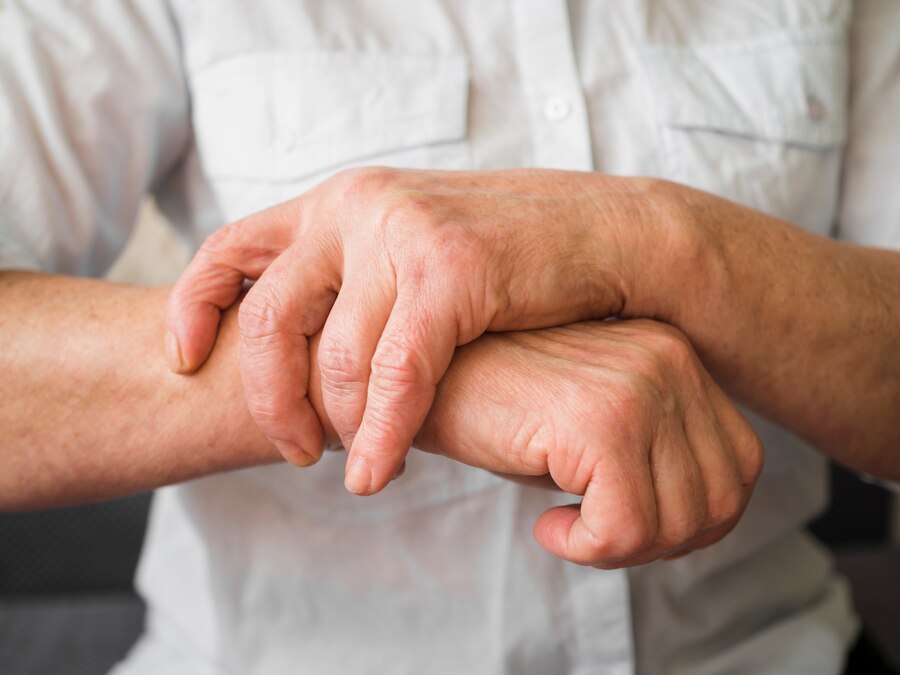When you're exploring pain relief options in Gresham, you'll find a variety of methods that can effectively manage discomfort. From physical therapy and chiropractic care to alternative therapies like acupuncture and massage, there are tailored approaches that suit different needs. You might also consider how lifestyle modifications and stress management techniques can enhance your overall well-being. Understanding the nuances of these options is essential, as each has unique benefits that could change your experience with pain. So, what might work best for you?
Physical Therapy Options
Exploring physical therapy options can be a game-changer for managing pain in Gresham. When you experience discomfort, finding effective relief is crucial, and physical therapy offers a proactive approach. By working with a licensed therapist, you'll gain personalized attention tailored to your specific needs.
In Gresham, various physical therapy techniques are available to address issues like chronic pain, injury recovery, and mobility challenges. You'll likely begin with an assessment, where the therapist evaluates your condition and develops a customized treatment plan. This plan may include exercises to strengthen muscles, improve flexibility, and enhance overall function.
You'll actively engage in your recovery, which can empower you and accelerate healing. Manual therapy is another important aspect of physical therapy that you might experience. This hands-on technique helps alleviate pain and improve circulation. Your therapist can manipulate soft tissues and joints, promoting relaxation and better movement.
Additionally, modalities such as ultrasound or electrical stimulation may be introduced to further reduce pain and inflammation. Don't forget about education—your therapist will equip you with knowledge about your condition and strategies for managing pain at home.
They might recommend lifestyle modifications or specific stretches that fit your routine.
Alternative Therapies
Many people in Gresham are finding relief through alternative therapies, which can complement traditional pain management methods. You might consider exploring options such as acupuncture, massage therapy, or chiropractic care. These therapies not only target pain but also promote overall wellness, helping you feel more balanced.
Acupuncture involves inserting thin needles into specific points on your body to alleviate pain and improve energy flow. Many find that it effectively reduces chronic pain conditions, such as back pain or migraines.
If you're hesitant about needles, massage therapy could be a great alternative. It helps relieve muscle tension and improves circulation, enabling your body to heal naturally.
Chiropractic care focuses on spinal alignment and can help alleviate pain caused by misalignments. Regular adjustments might enhance your mobility and reduce discomfort, providing a holistic approach to pain relief.
Additionally, you might explore yoga or meditation. Both practices encourage mindfulness and relaxation, which can be incredibly beneficial for managing pain. Yoga stretches and strengthens your body, while meditation helps calm your mind and reduces stress, which often exacerbates pain.
Herbal remedies and dietary changes are also worth considering. Certain herbs have anti-inflammatory properties, and a balanced diet may reduce pain triggers.
However, it's crucial to consult a healthcare professional before starting any new treatment.
Incorporating these alternative therapies into your pain management plan can empower you to take control of your health and improve your overall quality of life.
Medication Management
While alternative therapies can provide significant relief, medication management plays an important role in addressing pain effectively. You may find that a well-structured medication plan helps you manage your pain more efficiently. It's critical to work closely with your healthcare provider to determine the best approach for your specific needs.
Start by discussing your pain levels, medical history, and any previous treatments with your doctor. This information will guide them in tailoring a medication regimen that suits you. Your doctor may recommend over-the-counter pain relievers like ibuprofen or acetaminophen for mild to moderate pain. For more severe discomfort, they might prescribe stronger medications, such as opioids or muscle relaxants.
It's necessary to monitor your response to the medications. Keep track of how your pain changes and any side effects you experience. If you notice that a particular medication isn't working as expected, don't hesitate to reach out to your doctor. They may adjust your dosage or switch you to a different medication to optimize your pain management.
Always follow your doctor's instructions carefully, and never mix medications without their guidance.
Additionally, consider the importance of combining medication management with lifestyle changes, such as exercise, diet, and stress reduction techniques. This holistic approach can enhance your overall well-being and make your pain management more effective.
Chiropractic Care
Chiropractic care offers a hands-on approach to alleviating pain and promoting overall wellness. If you're struggling with discomfort—whether it's from an injury, chronic pain, or tension—seeing a chiropractor could be a great option. Chiropractors focus on diagnosing and treating musculoskeletal issues, particularly those related to the spine. By using manual adjustments and other techniques, they can help restore proper alignment, which can lead to significant pain relief.
During your first visit, the chiropractor will conduct a thorough assessment, discussing your medical history and any specific issues you're experiencing. This personalized approach allows them to tailor their treatment to meet your needs. You might experience immediate relief from pain after just one session, but consistent visits often yield the best results over time.
Chiropractic care also emphasizes the importance of preventive measures. Your chiropractor may recommend exercises, stretches, or lifestyle changes that can enhance your overall health and help prevent future pain. By strengthening your body and improving flexibility, you're more likely to avoid injuries down the line.
Additionally, many people report improvements in mobility and function after starting chiropractic treatment, allowing them to engage more fully in daily activities.
Acupuncture Benefits
Acupuncture offers a unique approach to pain relief by stimulating specific points on the body with fine needles. This ancient practice is rooted in traditional Chinese medicine and focuses on balancing your body's energy, known as "Qi." By inserting needles into targeted areas, acupuncture can help alleviate various types of pain, including chronic back pain, arthritis, headaches, and even menstrual discomfort.
You might be surprised by how quickly you can experience relief. Many people report significant improvements after just a few sessions. Acupuncture works by triggering your body's natural healing response, which can reduce inflammation and promote better blood circulation. This means you couldn't only feel less pain but also enjoy enhanced overall well-being.
Another benefit is that acupuncture is generally safe when performed by a trained professional. You won't have to worry about the side effects commonly associated with medications, such as drowsiness or dependency. Plus, the treatment is often tailored to your individual needs, ensuring a personalized experience.
In addition to pain relief, acupuncture can help with stress reduction and improve your sleep quality. This means you can tackle both physical and emotional challenges more effectively.
If you're looking for a holistic approach to managing your pain, acupuncture might just be the solution you need. So why not give it a try? You could discover a new path to relief that complements your overall health strategy.
Lifestyle Modifications
Making lifestyle modifications can greatly impact your pain management journey.
You can start by incorporating regular exercise, choosing a balanced diet, and practicing stress management techniques.
These changes not only enhance your overall well-being but also help reduce pain effectively.
Exercise Regularly
To alleviate pain and improve overall well-being, incorporating regular exercise into your routine can be a game-changer.
Physical activity not only strengthens muscles and improves flexibility but also releases endorphins—your body's natural painkillers. You don't have to commit to intense workouts; even moderate exercise can make a significant difference.
Here are three effective ways to get started:
- Walking: Aim for at least 30 minutes a day. It's simple, low-impact, and can be easily adjusted to your fitness level. Plus, it's a great way to enjoy the outdoors.
- Stretching: Incorporate daily stretching exercises to enhance flexibility and reduce muscle tension. Focus on areas where you feel discomfort to help alleviate pain over time.
- Strength Training: Engage in light resistance training a couple of times a week. This helps build muscle strength, supporting your joints and reducing strain on your body.
Balanced Diet Choices
A balanced diet plays an essential role in managing pain and enhancing your overall health. By choosing the right foods, you can reduce inflammation and improve your body's ability to heal. Focus on incorporating a variety of fruits and vegetables, lean proteins, whole grains, and healthy fats into your daily meals.
These nutrient-rich foods provide essential vitamins and minerals that support your immune system and promote recovery. Omega-3 fatty acids, found in fatty fish like salmon and walnuts, are particularly beneficial for reducing inflammation. Likewise, antioxidants in berries and leafy greens can help combat oxidative stress, which may contribute to pain.
Don't forget to stay hydrated; drinking plenty of water can help maintain your body's functions and flush out toxins. Limit your intake of processed foods, added sugars, and excessive salt, as these can exacerbate inflammation and lead to discomfort.
Instead, try to choose fresh, whole ingredients whenever possible. By making these balanced dietary choices, you'll not only experience better pain management but also improve your overall well-being, making daily activities more enjoyable and less challenging.
Stress Management Techniques
While managing stress may seem overwhelming, implementing effective techniques can greatly improve your pain levels and overall quality of life.
By incorporating stress management into your daily routine, you'll find it easier to cope with daily challenges and reduce the physical manifestations of stress.
Here are three effective stress management techniques you can try:
- Mindfulness and Meditation: Spend a few minutes each day focusing on your breath and being present. This practice helps ground you and can alleviate feelings of anxiety and tension.
- Regular Exercise: Engage in physical activities you enjoy, whether it's walking, yoga, or dancing. Exercise releases endorphins, which are natural mood lifters, and can greatly reduce stress levels.
- Time Management: Organize your tasks and set realistic goals. Prioritizing your responsibilities can help you feel more in control and less overwhelmed by life's demands.
Conclusion
In Gresham, finding the right pain relief method is all about personalizing your approach. By combining physical therapy, chiropractic care, and alternative therapies, you can create an all-encompassing plan that suits your needs. Don't forget the importance of lifestyle modifications, like regular exercise and stress management, to support your healing journey. By taking an active role in your recovery, you can enhance your well-being and reduce pain more effectively. Take the first step toward a pain-free life today!



